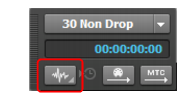When SONAR is used alone, or with an external device that does not have its own clock or timing signal, you use one of two clock sources: Internal or Audio.When the clock source is set to Internal, SONAR uses the clock built into the computer or the computer’s MIDI interface as its timing source. If your projects contain only MIDI (no audio), this is the most efficient method of playback.If your projects contain MIDI and audio, or only audio, you should set the clock source to Audio. This lets the sound card clock determine the correct speed for audio playback and automatically synchronizes MIDI playback to match the audio. For more information, see System configuration.When either of these clock sources is used, you can also configure SONAR to drive other MIDI devices using MIDI Synchronization. For more information, see MIDI synchronization. If you need to send MIDI Time Code (MTC), SONAR will send this data regardless of the clock setting.Do one of the following:




Tip - Searching Documentation
Tip: To search for a specific topic, type your search query in the Search Cakewalk.com field at the top right of this page.
When the search results appear, click which product's documentation you would like to search to filter the search results further.
Note - Using Offline Help
Note: If you prefer to always use offline Help, go to Edit > Preferences > File > Advanced in your Cakewalk software and select Always Use Offline Help.
If you are not connected to the internet, your Cakewalk software will default to showing offline help until an internet connection becomes available.




